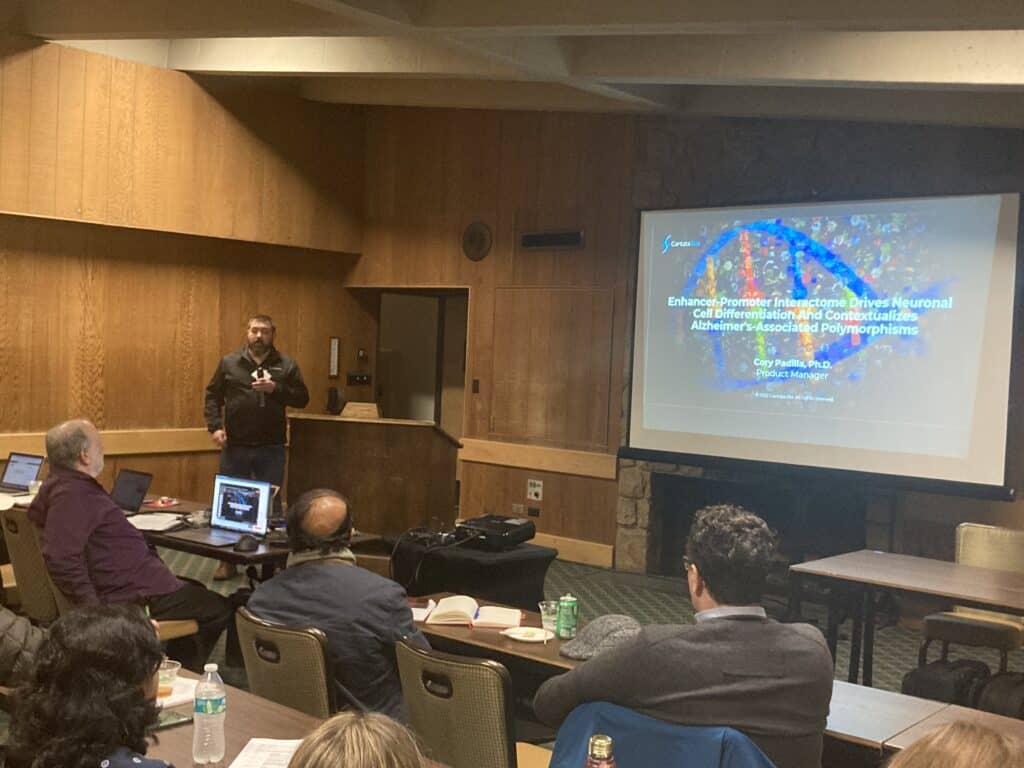Menu
Menu
After a wet arrival, the rain broke, and the sun finally made an appearance, marking the second day of the historic 45th annual Asilomar Chromatin Conference – yes, you read that right, 45 years! Despite chilly temperatures, the lecture hall was warmed with exciting talks from researchers all over the globe and lively debates on chromatin dynamics and how it shapes genomes and directs gene expression. The jam-packed conference schedule was highlighted with talks starting bright and early and going well into the night each day, with an obligatory break to enjoy the trademark Monterey Bay sunsets.
1At the heart of the picturesque coastal location were presentation after presentation covering exciting new breakthroughs in chromatin biology. These talks focused on the nucleosome and its role in a wide array of topics ranging from development and aging to diseases such as muscular dystrophy and various cancers. Much of the work highlighted bivalent or polycomb complexes and how these tight bundles of poised chromatin become more or less accessible in different cellular states. As such, ChIP-seq focused on H3K27me3 (a key marker of polycomb complexes) and ATAC-seq were regularly featured during the talks.

3D genomics made a notable footprint at Asilomar this year! Speakers used a wide array of 3D genomics approaches, including Hi-C, Micro-C, Micro-C Capture (MCC), and HiChIP, to help integrate and contextualize their multi-omic studies. These talks spanned topics on therapy-based protein engineering, and early work suggests TAD boundaries might help stablize and limit off-target impacts of different protein-directed therapies. A new term, “Euchromatin hopping,” was showcased with the help of MCC, in which looping can promote enhancer-driven chromatin modifications. These talks just highlight a small handful of ways in which researchers are using the 3D genome today. Additionally, there was a lot of discussions and general excitement in the after-session social gatherings on how 3D genomics might help researchers with their current research questions.
It was an exciting and fulfilling way to wrap up 2023! There’s nothing quite like turning off Zoom, getting out from behind the desk, and interacting with the community that we belong to. Plus, you can never go wrong with science over a beer at the beach, even on cold December days!
Keep an eye out for Dovetail at PAG 31, Precision Medicine WC in Silicon Valley, The Festival of Genomics & Biodata in London, Keystone Epigenetic Mechanisms and Cancer Treatment, AGBT, and The Allied Genomics Conference in the coming months. We look forward to connecting with you again soon!